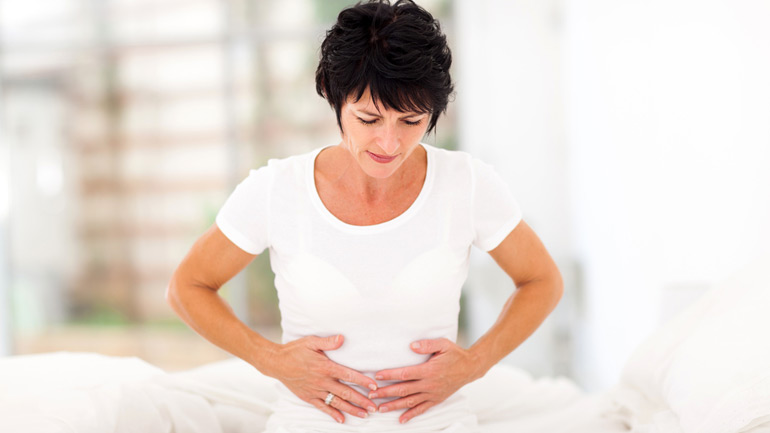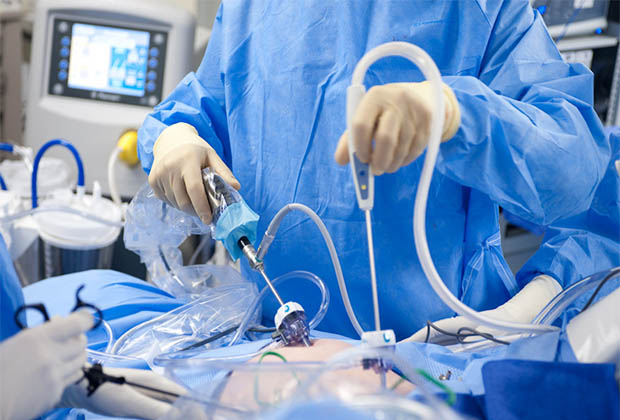
1-What is menopause?
Menopause which is one of the most important periods in a woman’s life, is having an irregular menstrual cycle after the age of 40 until the age of 55 and after a full loss of the period. If a female does not see her period for 12 months this will mean she has entered menopause. Along with the transition to this period, the ovaries will no longer be functional.
2-What are the causes of sexual problems in menopause?
Many women who enter menopause will face a physical and psychological change. There will be considerable changes in the hormone levels in the body. The cause of sexual problems during this period, is mostly because of ovarian function changes and the change in the hormonal levels.
3-Which hormone levels are reduced during this period?
In particular hormones such as oestrogen, testosterone and progesterone will decrease after entering menopause which can lead to sexual problems.
4-The changes in sexual organs during menopause
- Outer lips of the vagina and clitoral will start to go smaller.
- The hair in the genital area is reduced.
- The entrance of the vagina narrows.
- Flexibility and the flexibility of the input portion of the vagina and decreases with time. The layer inside the vagina starts to get thinner.
- The lubrication of the vagina is reduced.
- The colour of the vagina will start fading.
- Shrinkage occurs in the ovaries.
5-The changing structure of the body
Wrinkles that begin to occur with menopause, weight gain, loss of flexibility, factors such as the change of the physical structure of the body can make a female lose interest in her sexual life. However, these issues of sexuality is not the end. A comfortable way to express one’s sexuality without the risk of pregnancy during this period is possible.
6-The most common complaints
- Reduced sexual desire (decreased libido)
- Pain during sexual intercourse
- Vaginal dryness
- Difficulty in having an orgasm
- Loss of sensitivity in the genital area
7-Orgasmic capacity
Contrary to common belief, menopause does not decrease the capacity of orgasm. Only because of the changes on the vagina to reach orgasm may take longer. This also can be described as difficulty in reaching an orgasm.
8-Menstrual irregularity due to the fear of pregnancy
Menstrual irregularities in women due to the fear of conception may cause tension and lack of sexual drive. You should contact your doctor and overcome this tension, and evaluate protection methods.
9-Changes in sexual life during menopause
Due to psychological and physical factors a decrease in the sexual life can be seen. However, menopause is not the end of a woman’s sexuality.
10-How does psychological concerns during menopause affect sexuality?
A woman who may lose interest in sexual intercourse, may think that she has lost her sexual attractiveness. Due to the changing physiology of menopause, menopause treatment can be seen. This period should not be considered the end of womanhood. Also aging is not the beginning of menopause.
11-Can sexual problems which has started with menopause be treated?
During menopause, in problems such as sexuality and other issues it may be necessary to see a doctor. In order to avoid sexual problems that has taken place in this period, the female can apply for different treatments and methods.
12-What are the methods of treatment?
Hormone therapy will help the problems that emerged in this period such as; sexual problems, vaginal dryness and low sexual desire. There are exercises that can be done for the strengthening of the walls of the vagina during sexual intercourse to reduce complaints.
13-What is hormone therapy?
A large part of the problems during menopause are due to the reduced oestrogen hormone. The replacement hormone therapy is a treatment that helps replace the missing hormone in the females body.
14-Effects Of Hormone Therapy
The hormonal therapy which the female sees during menopause does not only affect her sexual life positively but also has many other positive affects. Some of these are; restores sexual desire, relieves vaginal dryness and pain during intercourse. Eliminates the complaints of hot flashes and sleep disorders. It also tries to prevent depression in this way too. It also helps to avoid complaints of urinary incontinence.
15-When should the female start the hormonal therapy?
Menopausal hormone therapy after surgery for patients with surgical interventions can start this therapy in 10 to 15 days. However, the doctor will determine the best time.
16-Psychological support during menopause
If the female who has just entered menopause has concerns about her sexual life or she has excessive anxiety it will be best to start a psychological support therapy. This professional help, will help the female get through this period easier.
17-What can you do for a better sexual life during menopause?
Psychological support must be provided if necessary, and of sexual therapy must be taken. For complaints such as vaginal dryness and local irritation, oral medications can be used. Libido booster drugs can be used too. But like all drugs, it should only be used within a doctor’s recommendation.
18-Do not hesitate to consult your doctor!
Feel free to consult your doctor at any time. There is a solution to all problems and an answer to all your questions brought on by menopause.
19-Talk to your partner!
Couples communication with each other gains more importance in a woman’s menopause period. Healthy and effective communication will make it easier to overcome this process.
20-Menopause is a new beginning!
It is known that a decrease in sexual desire during menopause will happen. Menopause is not a period where the female’s sexuality ends. If the symptoms of menopause reduces the quality of life, the female can start a suitable treatment and the symptoms of menopause can be relieved.



 Under normal conditions, a female’s menstrual cycle should be 21 to 35 days. It is considered to be normal if the menstrual cycle is 21 to 35 days. If the cycle is less than 21 days and the female is experiencing menstrual bleeding every 20 days or less, this is accepted as a frequent mensuration. Women who are seeing their period this frequently may think that it has occurred twice in one month. This one is an expression of imbalance and irregularity of menstrual cycles.
Under normal conditions, a female’s menstrual cycle should be 21 to 35 days. It is considered to be normal if the menstrual cycle is 21 to 35 days. If the cycle is less than 21 days and the female is experiencing menstrual bleeding every 20 days or less, this is accepted as a frequent mensuration. Women who are seeing their period this frequently may think that it has occurred twice in one month. This one is an expression of imbalance and irregularity of menstrual cycles.
 1-How many days will menstrual bleeding last?
1-How many days will menstrual bleeding last?
 There are 3 embryonic cell layers in early stages of life. These layers differentiate and form cells and tissue groups which eventually forms organs. These layers are called germ cell layers. Germ cells are located in the testicles in males and the ovaries in women. These cells are responsible for the production of egg and sperm cells. These tumours that develop from the germ cells are capable of hosting many different textures. The dominant layer is called the ectoderm germ layer. In this layer, various tissues such as skin and skin appendages will develop. Therefore, the common benign germ cell tumours which are seen in the ovaries are called “dermoid cysts”.
There are 3 embryonic cell layers in early stages of life. These layers differentiate and form cells and tissue groups which eventually forms organs. These layers are called germ cell layers. Germ cells are located in the testicles in males and the ovaries in women. These cells are responsible for the production of egg and sperm cells. These tumours that develop from the germ cells are capable of hosting many different textures. The dominant layer is called the ectoderm germ layer. In this layer, various tissues such as skin and skin appendages will develop. Therefore, the common benign germ cell tumours which are seen in the ovaries are called “dermoid cysts”.










